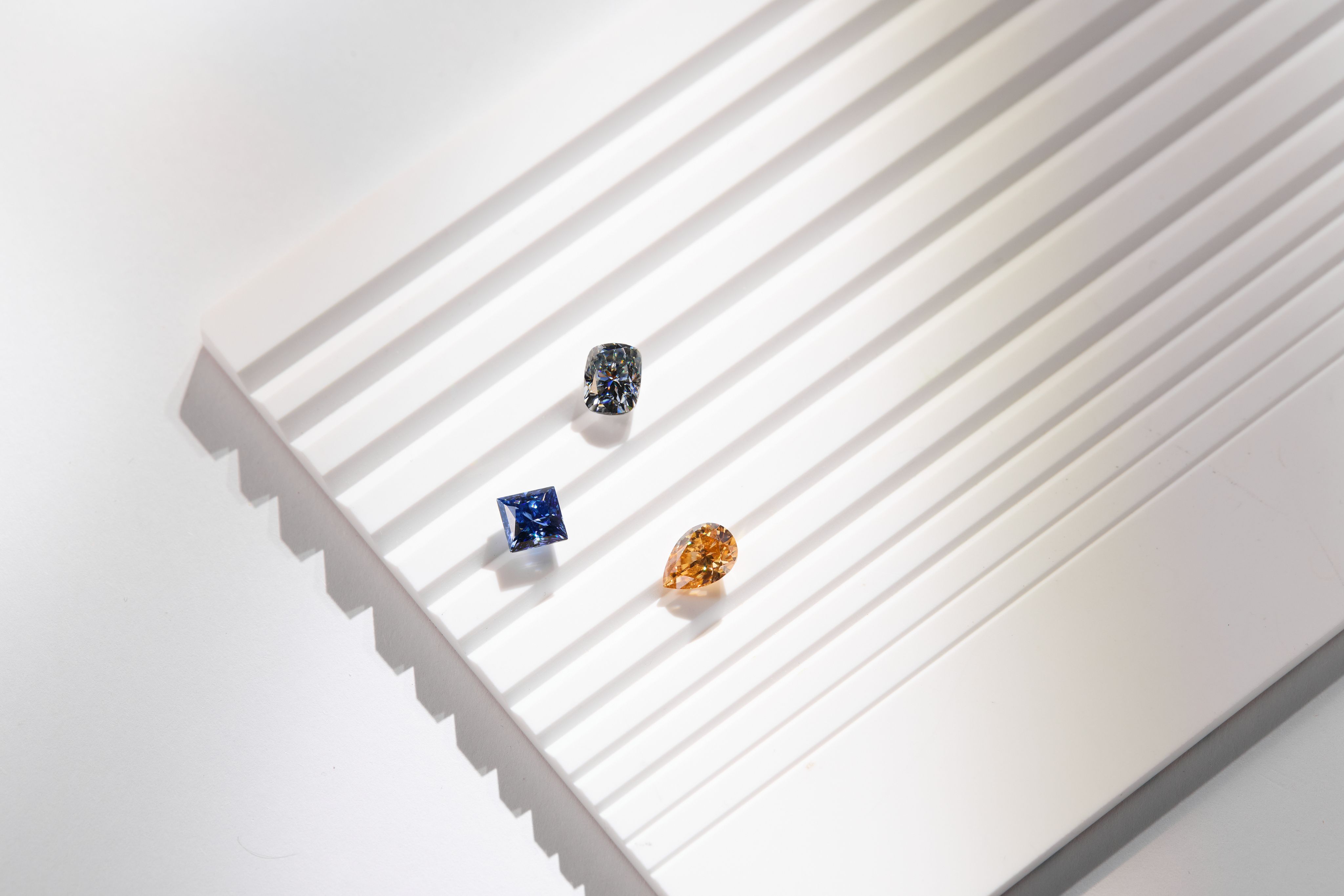
We spend a lot of time talking about diamonds, but it doesn't even scratch the surface of the fabulous world of gemstones. Traditionally, most people leaned towards a diamond centre stone engagement ring, and this was also long before the popularisation of lab-grown diamonds. Now, tastes are changing, engagement rings are becoming more personal and as a result, diamonds might be taking a backseat to make space for other gemstones. Here’s what you need to know.
What are Precious and Semi-precious Gemstones?
The complete list of gemstones is long, though some are more popular (and expensive) than others. Popular precious gemstones include diamonds, rubies, sapphires, and emeralds and are often the most popular to be featured in engagement rings due to their beauty and durability. Naturally, diamonds are one of the hardest substances on each, a 10 on the Mohs [mineral hardness] scale. Similarly to diamonds, other precious gemstones' price vary depending on the 4 Cs [cut, clarity, colour and carat weight].
Rubies are rare to find in large carat weights over one carat, and so are a more expensive option than sapphire or emerald if looking for an alternative look. That being said, red diamonds are one of the rarest colours of fancy diamonds, and so this will still be less pricey by comparison, and at a 9 on the Mohs scale, a durable stone for an engagement ring.

Sapphires, similar to diamonds, come in a range of colours from blue (like Kate Middleton’s engagement ring) to pink sapphires for the ultimate Barbiecore look. Blue sapphire engagement rings are popular choices, thanks to the royals, and are a stone more readily available in large carat weights. A sapphire ring is also extremely durable as synthetic sapphires are even used in spacecraft, making it great if you have an active lifestyle.
Emeralds widely have inclusions (internal marks) that specialist dealers call an internal “jardin,” or garden. The natural shape of the gemstones mean the popular cut is rectangular - also known as an emerald cut. Emeralds are also good news if you’re looking for a big ring, the stones density is lower than diamonds, so a one-carat emerald will look bigger than a one-carat diamond.
Other, less popular, but also less pricey (depending on the carat weight) stones for jewellery pieces include aquamarine, which is mostly eye-clean (no internal marks will be seen by the naked eye) but a 7.5-8 on the Mohs scale. If you like the icy blue colour of aquamarine, a blue lab diamond would be a great way to get the look but with a more hardwearing stone. Amethyst, which is a 7 on the Mohs scale, so though not very durable, it does have a modest price tag regardless of carat weight making it perfect for any statement jewellery pieces, even if not an engagement ring.
What’s the Deal with Lab-grown Gemstones?
Lab-grown gemstones, like diamonds and moissanite are popular options for engagement rings, as both are durable, and much more affordable than mined diamonds. Our other lab-grown gemstones include sapphire, emerald and rubies. You can also view our range of available coloured lab-grown diamonds.
The sceptics of lab-grown diamonds ask - is it a real diamond? Only a person with specialist tools can distinguish between a lab-grown diamond and a mined diamond. In fact, there is no way possible to tell the two apart just from looking at them with the eye or a jeweller’s loupe - which should tell you something about their similarities.

As for moissanite, these aren’t chemically the same as diamonds, as they are made from silicon carbide whilst diamonds are made from carbon, and lab diamonds from a carbon seed. Moissanite, like lab-grown diamonds, offers a remarkable sparkle. However, moissanite surpasses diamonds in brilliance due to its higher refractive index, resulting in more pronounced light dispersion within the stone
Other than their looks, lab-grown gemstones are known to be more sustainable than mined diamonds, whose mining process can have serious repercussions on the environments and communities surrounding them, not to mention the potential ethical implications of trading mined diamonds. Lab-grown stones are able to mimic the mined stones because they are grown in environments which emulate the natural growth process.
The shift in fine jewellery and engagement ring trends means mined diamonds are not the be-all and end-all, and it allows not only for more creativity, but for a wider range of clientele and budgets to be able to get in on the fun. If you’re looking to build your dream engagement ring from scratch you can discuss it with our experts by booking a free consultation here.